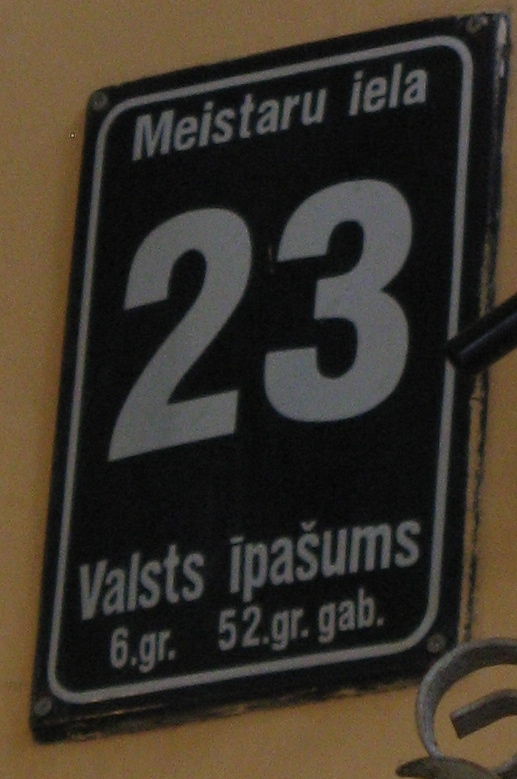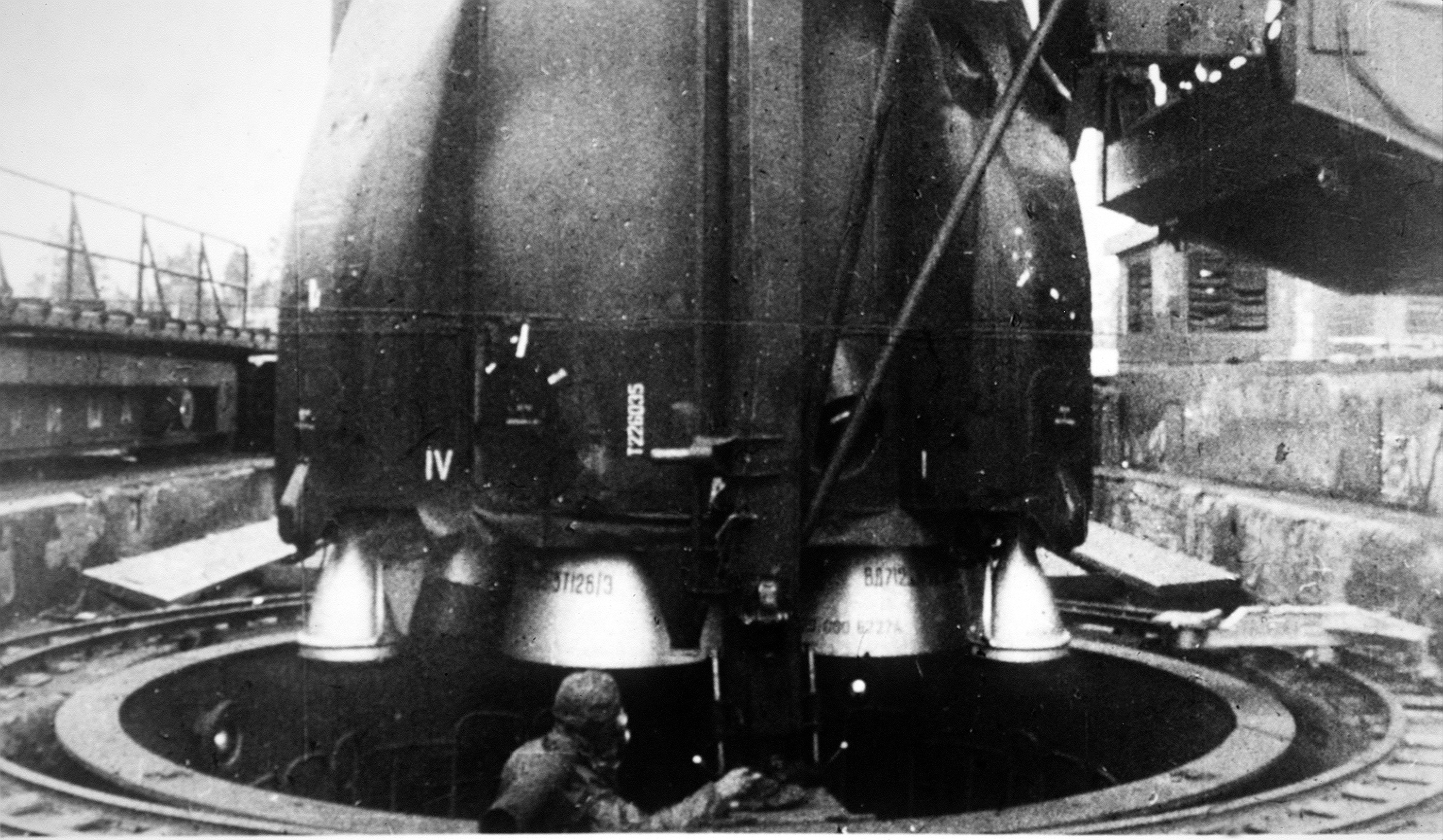|
KB Pivdenne
The ''Pivdenne'' Design Office (), located in Dnipro, Ukraine, is a designer of satellites and rockets, and formerly of Soviet intercontinental ballistic missiles (ICBMs), established by Mikhail Yangel. During the Soviet era, the bureau's OKB designation was OKB-586. The company is in close co-operation with the PA Pivdenmash multi-product machine-building company, also situated in Dnipro. Pivdenmash is the main manufacturer of the models developed by Pivdenne Design Office. Directors * 1954–1971 Mikhail Yangel * 1971–1991 Vladimir Utkin * 1991–2010 * 2010–2020 Products Current Ballistic missiles * Hrim-2 Orbital launch vehicles * Zenit rocket family **Zenit-2 **Zenit-2M **Zenit-3F **Zenit-3SL **Zenit-3SLB *Antares first stage core, in cooperation with Orbital Sciences Corporation * Dnepr, converted R-36 ICBM * R-36 ICBM, NATO reporting name SS-18 'Satan' Rocket engines *Main engines ** RD-843 ** RD-853 ** RD-859 ** ** RD-861K ** RD-866 ** RD-868 *Steering en ... [...More Info...] [...Related Items...] OR: [Wikipedia] [Google] [Baidu] |
State Ownership
State ownership, also called public ownership or government ownership, is the ownership of an Industry (economics), industry, asset, property, or Business, enterprise by the national government of a country or State (polity), state, or a public body representing a community, as opposed to an individual or Private property, private party. Public ownership specifically refers to industries selling goods and services to consumers and differs from Public good, public goods and government services financed out of a Government budget, government's general budget. Public ownership can take place at the Central government, national, regional government, regional, local government, local, or municipal levels of government; or can refer to non-governmental public ownership vested in autonomous public enterprises. Public ownership is one of the three major forms of property ownership, differentiated from private, Collective ownership, collective/cooperative, and common ownership. In marke ... [...More Info...] [...Related Items...] OR: [Wikipedia] [Google] [Baidu] |
RD-843
The RD-843 is a Ukrainian single nozzle liquid propellant rocket engine. It burns a hypergolic mixture of unsymmetrical dimethylhydrazine (UDMH) fuel with dinitrogen tetroxide (N2O4) oxidizer. It is pressure-fed. It is rated for up to 5 restarts, and can gimbal up to 10 degrees in each direction. It was developed by Yuzhnoye Design Bureau for Avio and is manufactured by Yuzhmash. It uses the RD-869 thrust chamber, the old Soviet ICBM SS-18 final stage engine from which it is evolved, and which was also designed by Yuzhnoye. The RD-843 ground test campaign included 74 tests, 140 ignitions, reaching a total of 8,201 seconds, which is approximately 12 service lives on 4 engines. As of June 2020 it has been successfully used on 14 orbital launches. The Vega and Vega C uses it as the main engine on its AVUM (Attitude & Vernier Upper Module) fourth stage which it calls the MEA (short for Main Engine AVUM). See also *AVUM - The upper stage of the Vega rocket that uses the RD-843 as ... [...More Info...] [...Related Items...] OR: [Wikipedia] [Google] [Baidu] |
NATO Reporting Name
NATO uses a system of code names, called reporting names, to denote military aircraft and other equipment used by post-Soviet states, former Warsaw Pact countries, China, and other countries. The system assists military communications by providing short, one- or two-syllable names, as alternatives to the precise proper names, which may be easily confused under operational conditions or are unknown in the Western world. The assignment of reporting names is managed by the Five Eyes Air Force Interoperability Council (AFIC), previously known as the Air Standardization Coordinating Committee (ASCC), which is separate from NATO. Based in Washington DC, AFIC comprises representatives from the militaries of three NATO members (Canada, the United Kingdom and United States) and two non-NATO countries (Australia and New Zealand). When the system was introduced in the 1950s, reporting names also implicitly designated potentially hostile aircraft. However, since the end of the Cold War, ... [...More Info...] [...Related Items...] OR: [Wikipedia] [Google] [Baidu] |
R-36 (missile)
The R-36 () is a family of intercontinental ballistic missiles (ICBMs) and space launch vehicles (Tsyklon) designed by the Soviet Union during the Cold War. The original R-36 was deployed under the GRAU index 8K67 and was given the NATO reporting name SS-9 Scarp. It was able to carry three warheads and was the first Soviet MIRV (multiple re-entry vehicle, multiple independently targetable re-entry vehicle) missile. The later version, the R-36M, also known as RS20, was produced under the GRAU designations 15A14 and 15A18 and was given the NATO reporting name SS-18 Satan. This missile was viewed by certain United States analysts as giving the Soviet Union Pre-emptive nuclear strike, first strike advantage over the U.S., particularly because of its rapid silo-reload ability, very heavy throw weight and extremely large number of atmospheric re-entry, re-entry vehicles. Some versions of the R-36M were deployed with 10 warheads and up to 40 penetration aids and the missile's high thro ... [...More Info...] [...Related Items...] OR: [Wikipedia] [Google] [Baidu] |
Dnepr (rocket)
The Dnepr rocket (; ) was a space launch vehicle named after the Dnieper River. It was a converted ICBM used for launching artificial satellites into orbit, operated by launch service provider ISC Kosmotras. The first launch, on April 21, 1999, successfully placed UoSAT-12, a 350 kg demonstration mini-satellite, into a 650 km circular Low Earth orbit. History The Dnepr was based on the R-36MUTTH Intercontinental ballistic missile (ICBM)called the ''SS-18 Satan'' by NATOdesigned in the 1970s by the Yuzhnoe Design Bureau in Dnepropetrovsk, Ukrainian SSR. among the outstanding authors of the project there are people like Boris Gubanov, Sergey Sopov. The Dnepr control system was developed and produced by the JSC "Khartron", Kharkiv. The Dnepr was a three-stage rocket using storable hypergolic liquid propellants. The launch vehicles used for satellite launches have been withdrawn from ballistic missile service with the Russian Strategic Rocket Forces and store ... [...More Info...] [...Related Items...] OR: [Wikipedia] [Google] [Baidu] |
Orbital Sciences Corporation
Orbital Sciences Corporation (commonly referred to as Orbital) was an American company specializing in the design, manufacture, and launch of small- and medium- class space and launch vehicle systems for commercial, military and other government customers. In 2014, Orbital merged with Alliant Techsystems (ATK) to create a new company called Orbital ATK, which in turn was purchased by Northrop Grumman in 2018. Orbital was headquartered in Dulles, Virginia and publicly traded on the New York Stock Exchange with the ticker symbol ORB. Orbital's primary products were satellites and launch vehicles, including low Earth orbit (LEO), geosynchronous Earth orbit and planetary spacecraft for communications, remote sensing, scientific and defense missions; ground- and air-launched launch vehicles that delivered satellites into orbit; missile defense systems that were used as interceptor and target vehicles; and human-rated space systems for Earth orbit, lunar and other missions. Orbital ... [...More Info...] [...Related Items...] OR: [Wikipedia] [Google] [Baidu] |
Antares (rocket)
Antares (), known during early development as Taurus II, is an American expendable medium-lift launch vehicle developed and built by Orbital Sciences Corporation (later Orbital ATK and Northrop Grumman) with financial support from NASA under the Commercial Orbital Transportation Services (COTS) program awarded in February 2008, alongside the company's automated cargo spacecraft, Cygnus. Like other launch vehicles developed by Orbital, Antares leveraged lower-cost, off-the-shelf parts and designs. The first stage is liquid fueled, burning RP-1 (kerosene) and liquid oxygen (LOX). Due to Orbital's limited experience with large liquid stages, the construction was subcontracted to the Ukrainian companies Pivdenne and Pivdenmash. Initially, the Antares 100 series used refurbished NK-33 engines, remnants of the Soviet N1 moon rocket. However, after a catastrophic explosion, the Antares 200 series transitioned to newly built Russian RD-191 engines. Following Russia's in ... [...More Info...] [...Related Items...] OR: [Wikipedia] [Google] [Baidu] |
Zenit-3SLB
The Zenit 3SLB or Zenit-3M was a Ukrainian expendable carrier rocket derived from the Zenit-2SB. It was a member of the Zenit family of rockets, which were designed by the Yuzhnoye Design Office. Produced at Yuzhmash, the rocket was a modified version of the Zenit-3SL, designed to be launched from a conventional launch pad rather than the Sea Launch Ocean Odyssey platform. Most of components of the rocket were produced in Russia. The Ukrainian space industry was highly integrated with that of Russia due to its Soviet heritage, but that cooperation was interrupted by the Russo-Ukrainian War beginning in 2014, which effectively led to a hiatus in the Zenit program. The subsequent Russian invasion of Ukraine in 2022 saw damage to its manufacturing facilities due to Russian missile strikes, and what survived those strikes pivoted to producing military weapons. Launches of Zenit-3SLB rockets were conducted from Site 45/1 at the Baikonur Cosmodrome. Commercial launches were condu ... [...More Info...] [...Related Items...] OR: [Wikipedia] [Google] [Baidu] |
Zenit-3SL
The Zenit-3SL was an expendable carrier rocket operated by Sea Launch. First flown in 1999, it was launched 36 times, with three failures and one partial failure. It was a member of the Zenit family of rockets, and is built by the Yuzhnoye Design Bureau. RKK Energia produced the Block DM-SL upper stage, whilst the payload fairing was produced by Boeing. Launches were conducted from the Ocean Odyssey platform anchored on the equator in the Pacific Ocean, at a point with 154°W longitude, about 370 kilometres east of Kiritimati. The Zenit-3SL design began in the late 1980s as the Zenit-3, a proposed replacement for the Proton-K, which would have used a Zenit-2 rocket with a Block D upper stage. This proposal was shelved after the dissolution of the Soviet Union, as Russia inherited the space programme, however the Zenit was manufactured in Ukrainian SSR. Boeing became involved in the programme in 1994. The design was subsequently modified, with a modified version of the Bloc ... [...More Info...] [...Related Items...] OR: [Wikipedia] [Google] [Baidu] |
Zenit-3F
The Zenit-3F, Zenit-3SLBF or Zenit-2SB/Fregat was an expendable carrier rocket. It was a member of the Zenit family of rockets, which were designed by Yuzhnoye Design Bureau of Ukraine Ukraine is a country in Eastern Europe. It is the List of European countries by area, second-largest country in Europe after Russia, which Russia–Ukraine border, borders it to the east and northeast. Ukraine also borders Belarus to the nor .... Launches of Zenit-3SLBF rockets were conducted from Baikonur Cosmodrome Site 45/1. The rocket consisted of a Zenit-2SB (Zenit-2M) core vehicle, with a Fregat-SB upper stage, developed by NPO Lavochkin of Russia, in place of the Block-DM used on the Zenit-3SL and 3SLB. The first launch of a Zenit-3F took place on 20 January 2011. The payload was an Elektro-L new generation weather satellite. A Zenit-3F was also used to successfully launch the Spektr-R radio astronomy satellite on 18 July 2011. Launches References {{rocket-stub ... [...More Info...] [...Related Items...] OR: [Wikipedia] [Google] [Baidu] |
Zenit-2M
The Zenit-2M, Zenit-2SB, Zenit-2SLB or Zenit-2FG was a Ukrainian expendable carrier rocket derived from the Zenit-3SL. It was a member of the Zenit family of rockets, which were designed by the Yuzhmash. Development The Zenit 2M was a modernised version of the Zenit-2, incorporating modifications and upgrades made to the design for the Sea Launch programme. Launches of Zenit-2M rockets were conducted from Baikonur Cosmodrome Site 45/1. Commercial launches are conducted by Land Launch, and use the designation 2SLB, however as of 2011, no commercial launches have been ordered and no launch of 2SLB has taken place as of 2023. Launches conducted by Roskosmos or the Russian Space Forces use the designation 2M. The designation 2SB can also be applied to the rocket when it is being used as part of a larger vehicle, such as the Zenit-3SLB. The first launch of a Zenit-2M occurred on 29 June 2007, carrying the last Tselina-2 ELINT satellite for the Russian Space Forces, T ... [...More Info...] [...Related Items...] OR: [Wikipedia] [Google] [Baidu] |




